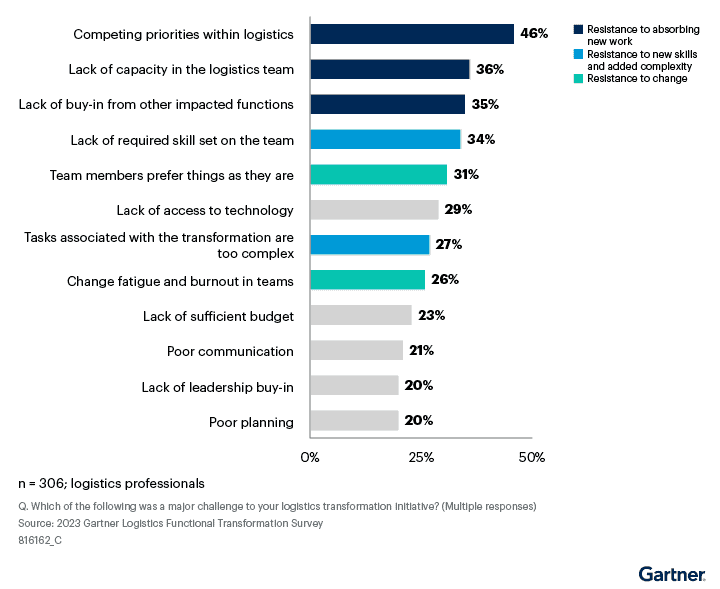A Gartner survey reveals that 76% of logistics transformations never fully succeed, failing to meet critical budget, timeline or key performance indicator (KPI) metrics. The survey also showed that effectively responding to team resistance and incorporating feedback increased the odds of transformation success by 62%.
"Leaders often respond to resistance by ramping up the urgency and adopting a directive leadership style, which is not only ineffective but counterproductive," said Snigdha Dewal, senior principal researcher in Gartner’s Supply Chain practice.
"Instead, leaders should engage their teams from the start of the process, embrace the areas of resistance as a resource, not a problem, and act on feedback to adapt transformation plans and how they are implemented. Harvesting the collective wisdom of their teams can lead to dramatically improved odds of success.” Snigdha Dewal
The survey found that over 80% of respondents had attempted four transformations in fewer than five years, averaging almost one a year. Internal change resistance played a greater role in obstructing the success of their transformation initiatives than outside pressures (see Figure 1).
Figure 1: Major logistics transformation challenges reflecting team resistance

The survey findings showed that 81% of logistics leaders believe that transformation is critical, yet only 20% adopted the approach of using resistance as a resource to leverage the collective wisdom of their teams to improve transformation outcomes. Adopting this less common approach dramatically improved the odds of transformation success by 62%.
The prevailing urgency approach, characterised by directive leadership, limited stakeholder engagement, and a “get with the program” mindset, led to a 47% decrease in the odds of transformation success.
Gartner calculated the odds of transformation success was determined from regression analysis of actions and messaging adopted by organisations during their logistics transformation towards their teams, and its subsequent impact on success metrics.
"Resistance can be productive or unproductive, but leaders must shift from viewing resistance as a barrier to seeing it as a source of valuable insights and learn how to leverage it," said Dewal. "This approach not only enhances project management outcomes but also boosts staff morale and can help unearth new competitive advantages."
The three key drivers behind this leadership approach include:
- Leaders demonstrate listening: Leadership knows the objectives, but also stays open-minded to changes or evolutions based on what they learn during the process.
- Resistant stakeholders are involved: Leadership engages the most resistant team members to better understand the hurdles in the way or to interpret the broader team’s change appetite.
- Leaders maintain an adaptable mindset: Leadership recognizes that transformations have many setbacks, so often will focus on only a few aspects that will be mission critical. Failure can be viewed as an indicator of where not to currently focus efforts.



